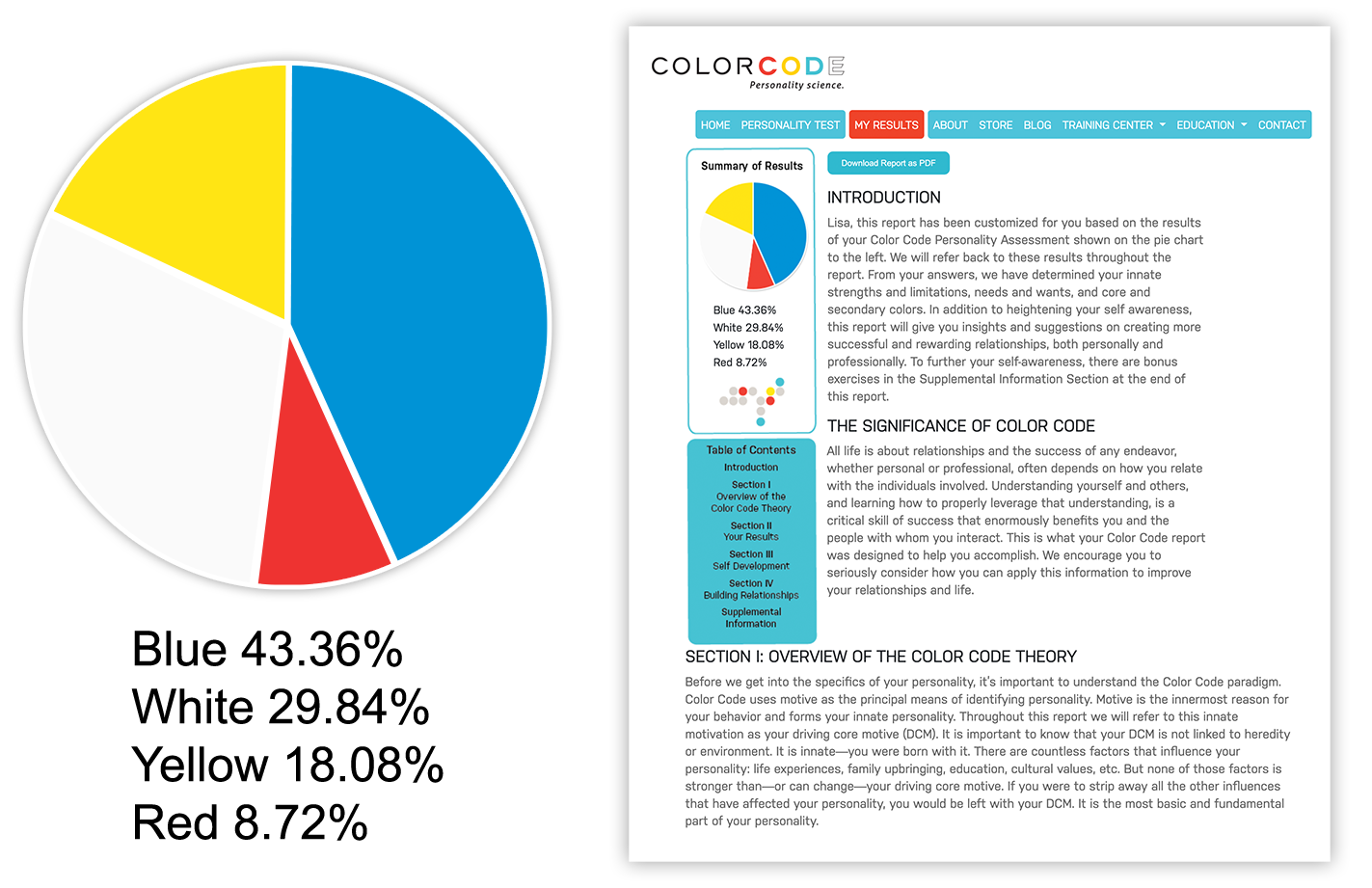Avoids Conflict is a LIMITATION of the WHITE personality in the Color Code Personality Assessment.
Avoids Conflict
"If you avoid conflict to keep the peace, you start a war inside yourself."― Cheryl Richardson
Lisa Ulshafer / 
Do you keep from speaking up from a fear of being rejected? Or maybe you're afraid of being seen as aggressive or hurtful? Avoiding conflict is a common approach that individuals may employ in order to maintain peace and harmony in their relationships or environments. It often involves steering clear of confrontations, disagreements, or difficult conversations in an effort to minimize tension or discomfort. Avoidance may stem from a desire to preserve relationships, fear of conflict escalating, or a preference for maintaining a sense of tranquility.
While avoiding conflict can provide temporary relief, it may also result in unresolved issues, unexpressed emotions, and potential negative impacts on relationships and personal well-being. Avoidance of conflict can manifest in various settings, such as at work, in families, or in friendships, and may require individuals to navigate a delicate balance between addressing differences and maintaining harmony.
Here are some common signs that you may be avoiding conflict:
-
Ignoring or dismissing disagreements: You tend to ignore or dismiss conflicts that arise, hoping they will go away on their own or thinking that they are not worth addressing.
-
Suppressing your emotions: You tend to suppress or downplay your emotions when conflicts arise, avoiding expressing your true thoughts and feelings about the situation.
-
Withdrawing or avoiding interactions: You tend to withdraw from interactions or avoid situations where conflicts may arise, such as avoiding certain people or situations altogether.
-
People-pleasing behavior: You tend to prioritize pleasing others or maintaining harmony over expressing your own opinions or addressing conflicts, even if it means sacrificing your own needs or desires.
-
Passive-aggressive behavior: You may exhibit passive-aggressive behavior, such as making sarcastic remarks, giving the silent treatment, or engaging in subtle acts of sabotage, as a way to indirectly express your frustrations or dissatisfaction.
-
Deflecting or shifting blame: You tend to deflect or shift blame onto others when conflicts arise, avoiding taking responsibility or addressing the underlying issues.
-
Avoiding difficult conversations: You tend to avoid having difficult conversations or postponing them indefinitely, hoping the issues will resolve themselves without direct communication.
-
Physical or emotional avoidance: You may physically or emotionally distance yourself from conflicts by avoiding eye contact, changing the topic, or redirecting the conversation to less contentious subjects.
-
Feeling anxious or stressed: You may feel anxious, stressed, or overwhelmed by the prospect of confronting conflicts, leading you to avoid them altogether.
-
Repeating patterns of avoidance: You notice a pattern of avoiding conflicts in your relationships or interactions, which may result in unresolved issues, ongoing tension, or strained relationships.
Here are 8 strategies for overcoming avoiding conflict:
-
Improve communication skills: Developing effective communication skills, such as active listening, expressing oneself clearly and assertively, and using "I" statements, can empower you to engage in constructive conversations and resolve conflicts in a healthier manner.
-
Identify and address underlying fears: Reflect on any underlying fears, such as fear of confrontation, rejection, or judgment, that may be driving the avoidance of conflict. By acknowledging and addressing these fears, you can gain perspective and develop strategies to manage them.
-
Practice self-awareness: Be mindful of your emotional reactions and responses to conflict. Understanding your triggers and emotional patterns can help you regulate their emotions and approach conflict with a more balanced mindset.
-
Seek common ground: Focus on finding common ground and areas of agreement with the other party, rather than solely focusing on differences. This can help shift the perspective from conflict to problem-solving and collaboration.
-
Foster a positive conflict resolution mindset: Embrace conflict as an opportunity for growth and positive change. View conflict as a natural part of human interaction and a chance to find mutually acceptable solutions.
-
Use a neutral third party: Consider involving a neutral third party, such as a trusted mediator, to facilitate the resolution of conflicts. A mediator can provide an unbiased perspective and help guide the conversation towards a resolution.
-
Practice empathy and perspective-taking: Seek to understand the other party's perspective and emotions with empathy. Putting yourself in the other person's shoes and seeing the situation from their point of view can help create a more compassionate and collaborative approach to conflict resolution.
-
Set boundaries: Establishing clear boundaries and expectations in relationships can prevent conflicts from escalating or becoming unmanageable. Communicate and assertively enforce healthy boundaries to maintain healthy relationships.
Overcoming the need to avoid conflict can lead to healthier and more authentic relationships. It allows for open communication, honest expression of thoughts and feelings, and constructive resolution of differences. Conflict can be seen as an opportunity for growth, learning, and strengthening relationships, rather than something to be feared or avoided. Working through conflict with the intent to resolve may involve facing challenges head-on, addressing issues directly, and seeking mutually agreeable solutions. It can lead to greater self-confidence, assertiveness, and improved conflict resolution skills. By embracing conflict as a natural part of human interaction, you can experience deeper connections, increased understanding, and a more fulfilling and authentic social life.
Avoids Conflict
― Cheryl Richardson

Do you keep from speaking up from a fear of being rejected? Or maybe you're afraid of being seen as aggressive or hurtful? Avoiding conflict is a common approach that individuals may employ in order to maintain peace and harmony in their relationships or environments. It often involves steering clear of confrontations, disagreements, or difficult conversations in an effort to minimize tension or discomfort. Avoidance may stem from a desire to preserve relationships, fear of conflict escalating, or a preference for maintaining a sense of tranquility.
While avoiding conflict can provide temporary relief, it may also result in unresolved issues, unexpressed emotions, and potential negative impacts on relationships and personal well-being. Avoidance of conflict can manifest in various settings, such as at work, in families, or in friendships, and may require individuals to navigate a delicate balance between addressing differences and maintaining harmony.
Here are some common signs that you may be avoiding conflict:
-
Ignoring or dismissing disagreements: You tend to ignore or dismiss conflicts that arise, hoping they will go away on their own or thinking that they are not worth addressing.
-
Suppressing your emotions: You tend to suppress or downplay your emotions when conflicts arise, avoiding expressing your true thoughts and feelings about the situation.
-
Withdrawing or avoiding interactions: You tend to withdraw from interactions or avoid situations where conflicts may arise, such as avoiding certain people or situations altogether.
-
People-pleasing behavior: You tend to prioritize pleasing others or maintaining harmony over expressing your own opinions or addressing conflicts, even if it means sacrificing your own needs or desires.
-
Passive-aggressive behavior: You may exhibit passive-aggressive behavior, such as making sarcastic remarks, giving the silent treatment, or engaging in subtle acts of sabotage, as a way to indirectly express your frustrations or dissatisfaction.
-
Deflecting or shifting blame: You tend to deflect or shift blame onto others when conflicts arise, avoiding taking responsibility or addressing the underlying issues.
-
Avoiding difficult conversations: You tend to avoid having difficult conversations or postponing them indefinitely, hoping the issues will resolve themselves without direct communication.
-
Physical or emotional avoidance: You may physically or emotionally distance yourself from conflicts by avoiding eye contact, changing the topic, or redirecting the conversation to less contentious subjects.
-
Feeling anxious or stressed: You may feel anxious, stressed, or overwhelmed by the prospect of confronting conflicts, leading you to avoid them altogether.
-
Repeating patterns of avoidance: You notice a pattern of avoiding conflicts in your relationships or interactions, which may result in unresolved issues, ongoing tension, or strained relationships.
Here are 8 strategies for overcoming avoiding conflict:
-
Improve communication skills: Developing effective communication skills, such as active listening, expressing oneself clearly and assertively, and using "I" statements, can empower you to engage in constructive conversations and resolve conflicts in a healthier manner.
-
Identify and address underlying fears: Reflect on any underlying fears, such as fear of confrontation, rejection, or judgment, that may be driving the avoidance of conflict. By acknowledging and addressing these fears, you can gain perspective and develop strategies to manage them.
-
Practice self-awareness: Be mindful of your emotional reactions and responses to conflict. Understanding your triggers and emotional patterns can help you regulate their emotions and approach conflict with a more balanced mindset.
-
Seek common ground: Focus on finding common ground and areas of agreement with the other party, rather than solely focusing on differences. This can help shift the perspective from conflict to problem-solving and collaboration.
-
Foster a positive conflict resolution mindset: Embrace conflict as an opportunity for growth and positive change. View conflict as a natural part of human interaction and a chance to find mutually acceptable solutions.
-
Use a neutral third party: Consider involving a neutral third party, such as a trusted mediator, to facilitate the resolution of conflicts. A mediator can provide an unbiased perspective and help guide the conversation towards a resolution.
-
Practice empathy and perspective-taking: Seek to understand the other party's perspective and emotions with empathy. Putting yourself in the other person's shoes and seeing the situation from their point of view can help create a more compassionate and collaborative approach to conflict resolution.
-
Set boundaries: Establishing clear boundaries and expectations in relationships can prevent conflicts from escalating or becoming unmanageable. Communicate and assertively enforce healthy boundaries to maintain healthy relationships.
Overcoming the need to avoid conflict can lead to healthier and more authentic relationships. It allows for open communication, honest expression of thoughts and feelings, and constructive resolution of differences. Conflict can be seen as an opportunity for growth, learning, and strengthening relationships, rather than something to be feared or avoided. Working through conflict with the intent to resolve may involve facing challenges head-on, addressing issues directly, and seeking mutually agreeable solutions. It can lead to greater self-confidence, assertiveness, and improved conflict resolution skills. By embracing conflict as a natural part of human interaction, you can experience deeper connections, increased understanding, and a more fulfilling and authentic social life.
Change can be challenging and difficult to do all on your own.
Contact Lisa today to make the kind of changes in your life that lift you to your greatest potential.

2 Free Template Downloads
#1. Developing Strengths & Becoming Charactered
#2. Removing My Limitations
Fill out the form below to receive your free templates:
Click to explore the Strengths & Limitations of each color:
FULL Analysis
A completely customized report that is designed to fully analyze your personality and provide bonus tools to help you on your way to personal development.
Results Include:
- Pie chart showing you what you scored in all 4 colors.
- Comprehensive analysis containing 35+ page report with customized content that describes your individual personality style in depth.
- List of your innate strengths and limitations.
- A breakdown of secondary colors and how they affect your personality.
- Throughout are videos, activities and other tools embedded to help you more fully understand your results.



